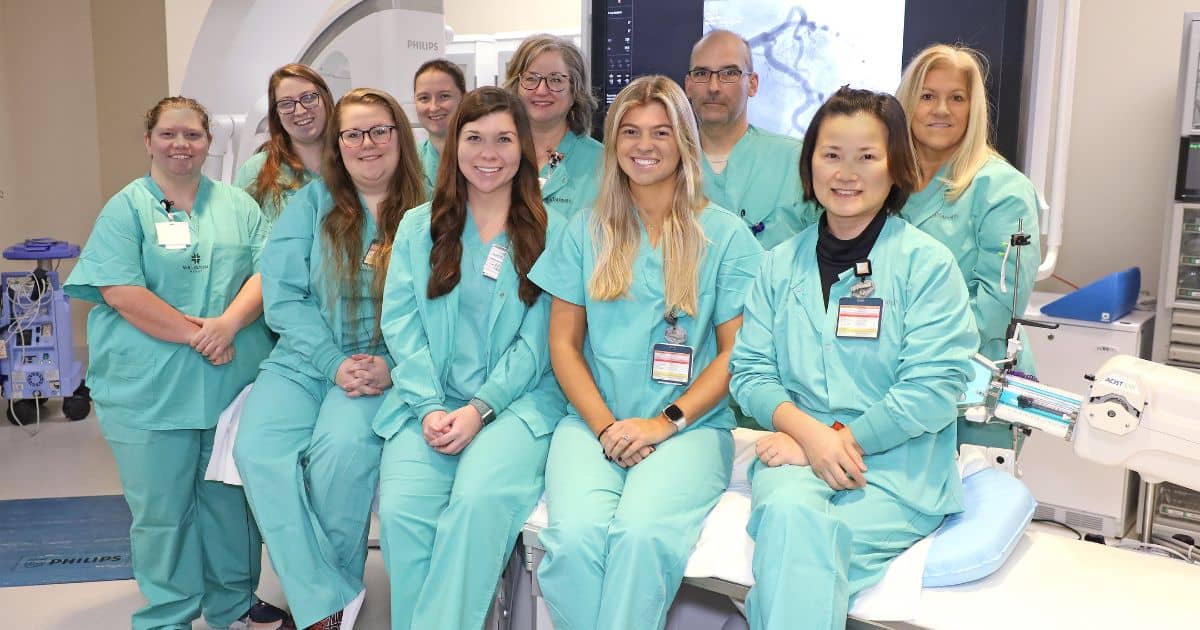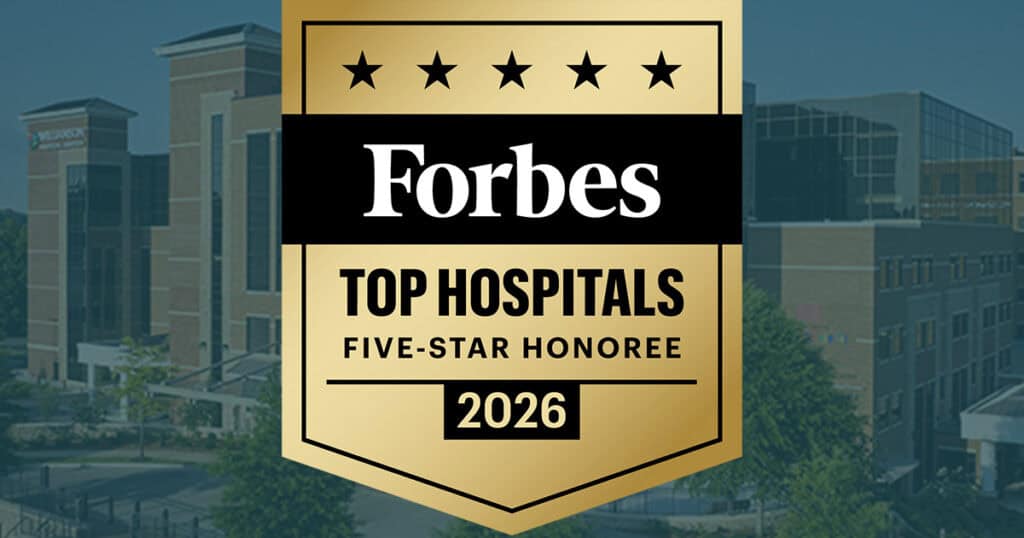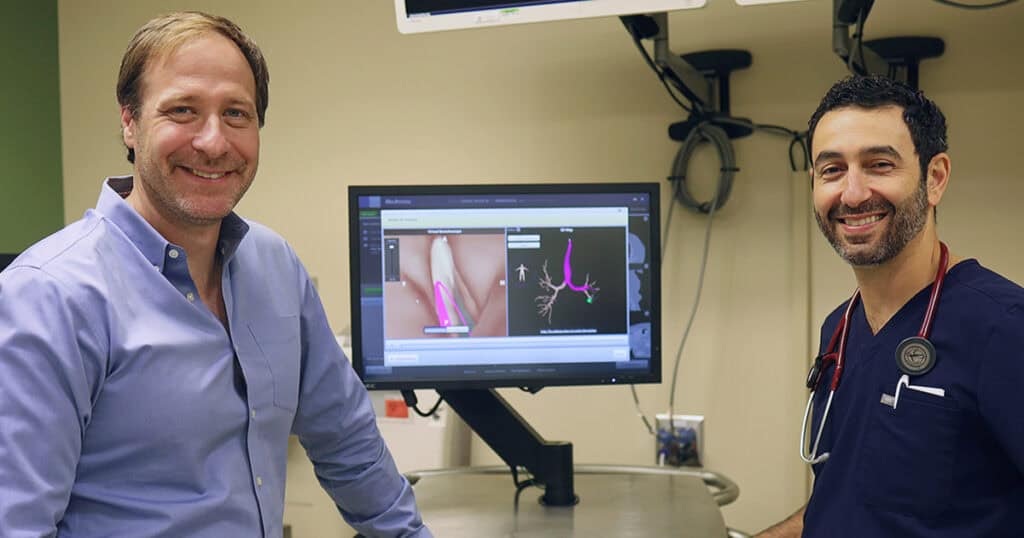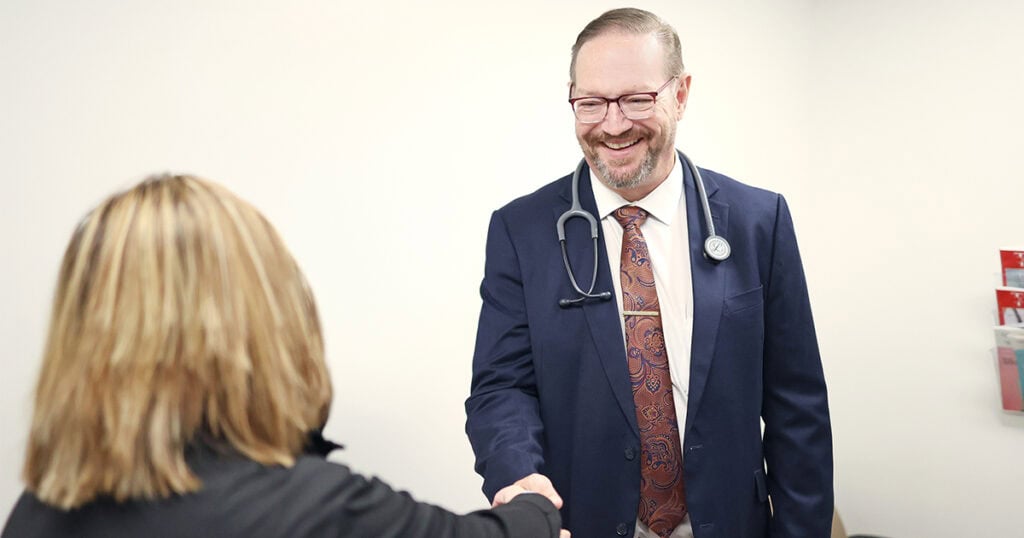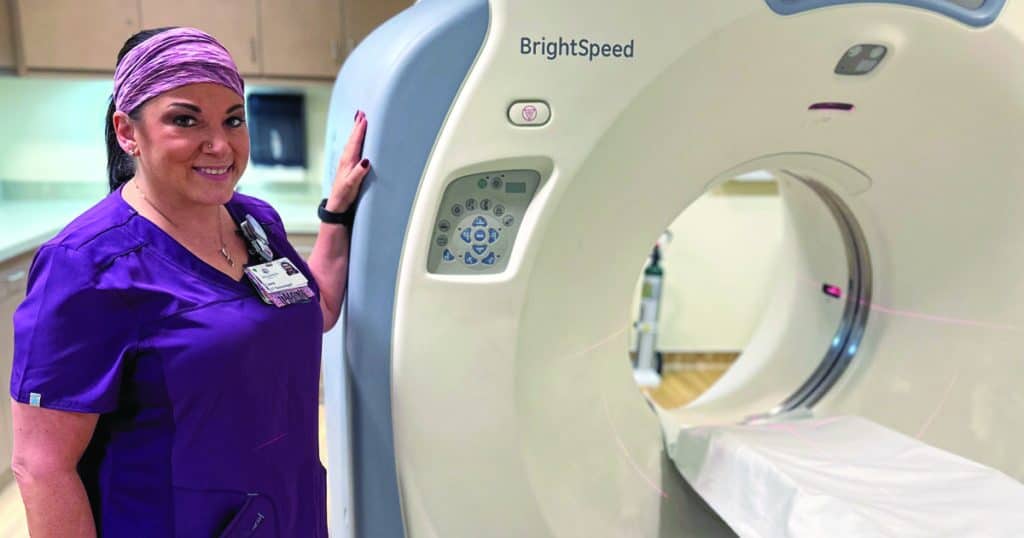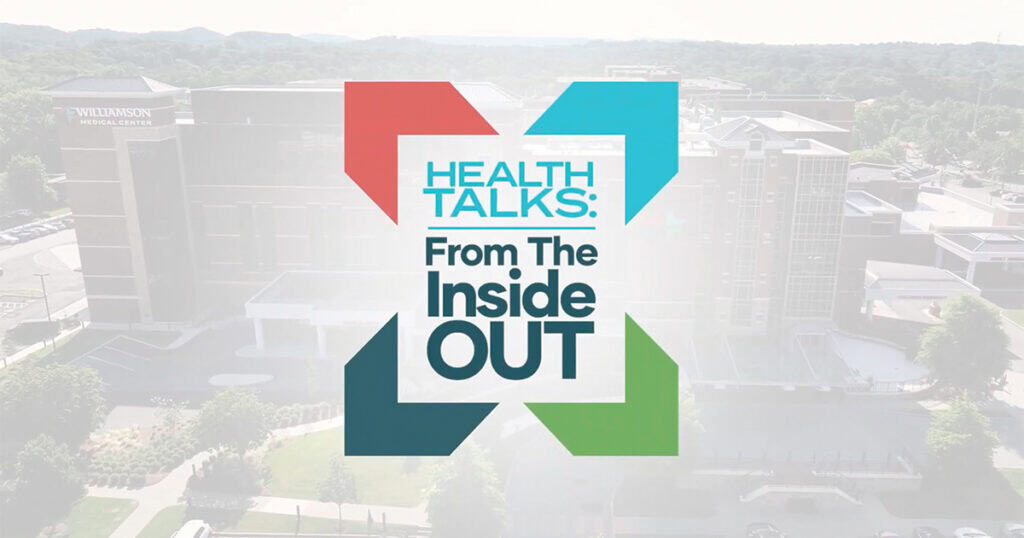Celebrating the Past, Present and Future with Williamson Health
Published: June 12, 2024
Originally published in Southern Exposure Magazine —
For more than 65 years, Williamson Health has been creating greater access to high-quality healthcare across Williamson County. When Williamson County Hospital opened in 1958, the 50-bed hospital with a medical staff of less than seven and more than 50 employees, served a county with a population just shy of 25,000.
Now part of Williamson Health, the regional healthcare system serves a population that’s already 10 times larger than it was in the 1950s—and projected to double by 2040.
Although the county’s appearance may have undergone changes, Williamson Health continues to uphold its foundational principles: a steadfast commitment to providing exceptional care for the communities it serves, alongside a proactive investment back into the community. This dedication is evident through various impactful endeavors, including bolstering the Williamson Health staff, implementing cutting-edge technologies and fostering meaningful local collaborations for important initiatives like its emergency medical services (EMS) operations and sports medicine efforts to care for Williamson County student-athletes.
Pondering The Past
When Williamson County Hospital opened its doors on January 15, 1958, local historians tell us that three physicians each closed their individual community hospitals—Dan German Hospital, Johnson Hospital and Pyle Hospital—to join the medical staff of the new hospital. Led by Dr. J.O. Walker, Williamson County Hospital saw 2,870 patients in its first year, including 890 ER cases, 655 surgeries and 395 births.
From the beginning, the hospital’s mission was to provide patient-centered care, something the system is still known for today. “Patients experienced a family-friendly atmosphere,” an early review stated. “All of the staff members made a great effort to have each patient feel that they were being cared for in a very special way.”
By 1960, Williamson County Hospital had received full accreditation from The Joint Commission and was already exceeding capacity. An expansion, the first of many in the system’s history, soon followed, adding 32 beds to the facility.
In 1972, the county partnered with Williamson County Hospital to introduce emergency medical services (EMS) to residents, a service that the health system still operates today.
Recognizing that Williamson County’s expanding population had outgrown the county’s only hospital, the Board of Trustees, led by David Buchanan, developed a plan to relocate the hospital closer to I-65, making it easier for residents throughout the county to access high-quality healthcare. In 1986, the hospital changed its name to Williamson Medical Center when the $26.5 million state-of-the-art facility opened with 144 beds at its present location.
For the next few decades, Williamson Medical Center continued its proven track record of growing and enhancing patient care for the residents of Williamson County.
In 2002, three additional floors were added to the hospital which brought the total number of patient beds to more than 200. As part of this same construction project, a new Medical Office Building and Ambulatory Surgery Center (ASC) opened.
In 2008, the Williamson Medical Center Outpatient Imaging Center opened to offer residents the most-up-to-date technology in digital mammography, bone density scanning, CT, ultrasound, EKG and X-ray services.
The Williamson Medical Group was established in 2013 with eight physicians practicing in three specialties.
The county’s first dedicated pediatric ER and inpatient unit, the Monroe Carell Jr. Children’s Hospital Vanderbilt at Williamson Medical Center, opened in 2015, and Williamson Medical Center entered a partnership with several orthopedic physicians in 2018 to create Bone and Joint Institute of Tennessee. In 2019, Bone and Joint Institute opened a stand-alone facility on the Williamson Medical Center campus.
What began as a small county hospital had expanded along with the communities it serves, becoming a premier destination for exceptional healthcare. But the organization’s work to elevate excellent healthcare throughout the region was far from over.
Today’s Williamson Health
Today, Williamson Health, now a regional healthcare system, includes more than 2,100 employees across more than 30 locations and over 860 physicians and advanced care practitioners offering exceptional healthcare close to home. Williamson Health serves our community through Williamson Medical Center, Bone and Joint Institute of Tennessee, The Turner-Dugas Breast Health Center, Monroe Carell Jr. Children’s Hospital Vanderbilt at Williamson Medical Center, Williamson Health Medical Group physician practices, outpatient imaging and laboratory services, 18 EMS rapid response units, and multiple joint venture Vanderbilt Health and Williamson Medical Center Walk-In Clinics in Williamson County.
But as Williamson County’s phenomenal growth continues—and even accelerates—expanding healthcare services and pursuing innovative technologies are even more important.
This is why, in 2022, Williamson Medical Center launched an extensive $200 million renovation and expansion project that touches nearly every area of the hospital, including improvements to Labor and Delivery, the Neonatal Intensive Care Unit (NICU), Cardiology, the Emergency Department, Intensive Care Unit (ICU) and more.
Williamson Health will be reaching another milestone this summer with the full opening of the newly expanded and renovated West Tower. The massive expansion added three floors to the original West Tower footprint plus a new wing that encompasses all six floors for a total of nearly 175,000 new square feet that has been added to Williamson Medical Center. The West Tower now includes a 35-bed ICU for critical care needs, 94 medical-surgical inpatient rooms, and 33 obstetrics rooms. The world-class Cardiac Center has also been updated to include two state-of-the-art catheterization labs and a brand-new electrophysiology lab.
Other project components include an expanded and renovated Emergency Department that went from 28 to 43 beds, as well as a brand new NICU with nine private bays and the addition of a third C-section operating room to be completed this fall.
Every element of the West Tower project is purposefully designed, allowing for greater efficiency and capacity, but also creating family-friendly spaces that promote healing and comfort. Top-of-the-line technologies in patient rooms enhance communication and the overall patient experience, while advanced equipment and integrated systems promote greater collaboration among providers and support continuity of care.
“Williamson Health exists to meet the healthcare needs of our community,” said Phil Mazzuca, Williamson Health CEO. “This transformational project is a tangible representation of our commitment to make top-tier healthcare more accessible to the residents of Williamson County.”
The final phase of the Williamson Medical Center renovation and expansion project, which includes renovations to the Main Lobby and patient floors in the original tower, is expected to continue into 2025.
But the Williamson Medical Center expansion project isn’t the only way Williamson Health is investing in the county. The system recently opened a new location in Spring Hill.
“We’ve been carefully planning and building this new clinic for more than a year,” Mazzuca said. “As Spring Hill continues to grow, we’re committed to providing the high-quality healthcare services residents need and deserve. Expanding access to primary care and the latest technologies is a top priority for Williamson Health.”
The new clinic, which joins another Williamson Health primary care clinic, Tollgate Medical Plaza; a walk-in clinic and two EMS stations in the Spring Hill area, offers primary care and other specialists, laboratory services, orthopedic care and physical therapy. It’s staffed by physicians and providers with deep Spring Hill area ties, including Paula Dunn, M.D.; Sanford Kim, M.D.; Matt Anderson, M.D.; Preet Gurusamy, M.D.; Andrea Pierce, PT; and Angel Shipman, PTA.
Focused On The Future
While the current expansion project and new location are vital to serving current residents of Williamson County, they’re also integral parts of Williamson Health’s plan to meet the future healthcare needs of the county. According to Williamson, Inc., Williamson County’s population is set to top 530,000 by 2040, becoming one of the five largest counties in the state.
Carefully planning and making sure projects meet and exceed current needs ensures Williamson County residents continue to have access to exceptional care in the future, Williamson Health officials said.
“We’re committed to our community,” said Tim Burton, associate administrator of Williamson Health Medical Group. “We’re always evaluating our capacity and where patients are driving from to seek care. We pay attention to county growth rates and look for tangible ways we can plan to create greater access to high-quality care now and in the future.”
Deeply rooted in the principles that have guided them since 1958, Williamson Health is committed to meeting the needs of Williamson County – not only today but for many generations to come. As the county continues to grow, Williamson Health will continue to look for ways to elevate care for the population, including additional locations, updated spaces, broadened services, increased acuity levels and cutting-edge technologies and advancements.
“As our community and surrounding region grows, Williamson Health will continue to evolve to provide the most advanced, world-class care, right here in Williamson County,” Mazzuca said.
To learn more about Williamson Health, visit williamsonhealth.org. For more information about the landmark renovation and expansion project now underway at Williamson Medical Center, visit williamsonhealth.org/more-for-you-close-to-home/. Interested in the new Spring Hill location? Learn more at williamsonhealth.org/spring-hill.
Celebrating the Past, Present and Future with Williamson Health
Originally published in Southern Exposure Magazine —
For more than 65 years, Williamson Health has been creating greater access to high-quality healthcare across Williamson County. When Williamson County Hospital opened in 1958, the 50-bed hospital with a medical staff of less than seven and more than 50 employees, served a county with a population just shy of 25,000.
Now part of Williamson Health, the regional healthcare system serves a population that’s already 10 times larger than it was in the 1950s—and projected to double by 2040.
Although the county’s appearance may have undergone changes, Williamson Health continues to uphold its foundational principles: a steadfast commitment to providing exceptional care for the communities it serves, alongside a proactive investment back into the community. This dedication is evident through various impactful endeavors, including bolstering the Williamson Health staff, implementing cutting-edge technologies and fostering meaningful local collaborations for important initiatives like its emergency medical services (EMS) operations and sports medicine efforts to care for Williamson County student-athletes.
Pondering The Past
When Williamson County Hospital opened its doors on January 15, 1958, local historians tell us that three physicians each closed their individual community hospitals—Dan German Hospital, Johnson Hospital and Pyle Hospital—to join the medical staff of the new hospital. Led by Dr. J.O. Walker, Williamson County Hospital saw 2,870 patients in its first year, including 890 ER cases, 655 surgeries and 395 births.
From the beginning, the hospital’s mission was to provide patient-centered care, something the system is still known for today. “Patients experienced a family-friendly atmosphere,” an early review stated. “All of the staff members made a great effort to have each patient feel that they were being cared for in a very special way.”
By 1960, Williamson County Hospital had received full accreditation from The Joint Commission and was already exceeding capacity. An expansion, the first of many in the system’s history, soon followed, adding 32 beds to the facility.
In 1972, the county partnered with Williamson County Hospital to introduce emergency medical services (EMS) to residents, a service that the health system still operates today.
Recognizing that Williamson County’s expanding population had outgrown the county’s only hospital, the Board of Trustees, led by David Buchanan, developed a plan to relocate the hospital closer to I-65, making it easier for residents throughout the county to access high-quality healthcare. In 1986, the hospital changed its name to Williamson Medical Center when the $26.5 million state-of-the-art facility opened with 144 beds at its present location.
For the next few decades, Williamson Medical Center continued its proven track record of growing and enhancing patient care for the residents of Williamson County.
In 2002, three additional floors were added to the hospital which brought the total number of patient beds to more than 200. As part of this same construction project, a new Medical Office Building and Ambulatory Surgery Center (ASC) opened.
In 2008, the Williamson Medical Center Outpatient Imaging Center opened to offer residents the most-up-to-date technology in digital mammography, bone density scanning, CT, ultrasound, EKG and X-ray services.
The Williamson Medical Group was established in 2013 with eight physicians practicing in three specialties.
The county’s first dedicated pediatric ER and inpatient unit, the Monroe Carell Jr. Children’s Hospital Vanderbilt at Williamson Medical Center, opened in 2015, and Williamson Medical Center entered a partnership with several orthopedic physicians in 2018 to create Bone and Joint Institute of Tennessee. In 2019, Bone and Joint Institute opened a stand-alone facility on the Williamson Medical Center campus.
What began as a small county hospital had expanded along with the communities it serves, becoming a premier destination for exceptional healthcare. But the organization’s work to elevate excellent healthcare throughout the region was far from over.
Today’s Williamson Health
Today, Williamson Health, now a regional healthcare system, includes more than 2,100 employees across more than 30 locations and over 860 physicians and advanced care practitioners offering exceptional healthcare close to home. Williamson Health serves our community through Williamson Medical Center, Bone and Joint Institute of Tennessee, The Turner-Dugas Breast Health Center, Monroe Carell Jr. Children’s Hospital Vanderbilt at Williamson Medical Center, Williamson Health Medical Group physician practices, outpatient imaging and laboratory services, 18 EMS rapid response units, and multiple joint venture Vanderbilt Health and Williamson Medical Center Walk-In Clinics in Williamson County.
But as Williamson County’s phenomenal growth continues—and even accelerates—expanding healthcare services and pursuing innovative technologies are even more important.
This is why, in 2022, Williamson Medical Center launched an extensive $200 million renovation and expansion project that touches nearly every area of the hospital, including improvements to Labor and Delivery, the Neonatal Intensive Care Unit (NICU), Cardiology, the Emergency Department, Intensive Care Unit (ICU) and more.
Williamson Health will be reaching another milestone this summer with the full opening of the newly expanded and renovated West Tower. The massive expansion added three floors to the original West Tower footprint plus a new wing that encompasses all six floors for a total of nearly 175,000 new square feet that has been added to Williamson Medical Center. The West Tower now includes a 35-bed ICU for critical care needs, 94 medical-surgical inpatient rooms, and 33 obstetrics rooms. The world-class Cardiac Center has also been updated to include two state-of-the-art catheterization labs and a brand-new electrophysiology lab.
Other project components include an expanded and renovated Emergency Department that went from 28 to 43 beds, as well as a brand new NICU with nine private bays and the addition of a third C-section operating room to be completed this fall.
Every element of the West Tower project is purposefully designed, allowing for greater efficiency and capacity, but also creating family-friendly spaces that promote healing and comfort. Top-of-the-line technologies in patient rooms enhance communication and the overall patient experience, while advanced equipment and integrated systems promote greater collaboration among providers and support continuity of care.
“Williamson Health exists to meet the healthcare needs of our community,” said Phil Mazzuca, Williamson Health CEO. “This transformational project is a tangible representation of our commitment to make top-tier healthcare more accessible to the residents of Williamson County.”
The final phase of the Williamson Medical Center renovation and expansion project, which includes renovations to the Main Lobby and patient floors in the original tower, is expected to continue into 2025.
But the Williamson Medical Center expansion project isn’t the only way Williamson Health is investing in the county. The system recently opened a new location in Spring Hill.
“We’ve been carefully planning and building this new clinic for more than a year,” Mazzuca said. “As Spring Hill continues to grow, we’re committed to providing the high-quality healthcare services residents need and deserve. Expanding access to primary care and the latest technologies is a top priority for Williamson Health.”
The new clinic, which joins another Williamson Health primary care clinic, Tollgate Medical Plaza; a walk-in clinic and two EMS stations in the Spring Hill area, offers primary care and other specialists, laboratory services, orthopedic care and physical therapy. It’s staffed by physicians and providers with deep Spring Hill area ties, including Paula Dunn, M.D.; Sanford Kim, M.D.; Matt Anderson, M.D.; Preet Gurusamy, M.D.; Andrea Pierce, PT; and Angel Shipman, PTA.
Focused On The Future
While the current expansion project and new location are vital to serving current residents of Williamson County, they’re also integral parts of Williamson Health’s plan to meet the future healthcare needs of the county. According to Williamson, Inc., Williamson County’s population is set to top 530,000 by 2040, becoming one of the five largest counties in the state.
Carefully planning and making sure projects meet and exceed current needs ensures Williamson County residents continue to have access to exceptional care in the future, Williamson Health officials said.
“We’re committed to our community,” said Tim Burton, associate administrator of Williamson Health Medical Group. “We’re always evaluating our capacity and where patients are driving from to seek care. We pay attention to county growth rates and look for tangible ways we can plan to create greater access to high-quality care now and in the future.”
Deeply rooted in the principles that have guided them since 1958, Williamson Health is committed to meeting the needs of Williamson County – not only today but for many generations to come. As the county continues to grow, Williamson Health will continue to look for ways to elevate care for the population, including additional locations, updated spaces, broadened services, increased acuity levels and cutting-edge technologies and advancements.
“As our community and surrounding region grows, Williamson Health will continue to evolve to provide the most advanced, world-class care, right here in Williamson County,” Mazzuca said.
To learn more about Williamson Health, visit williamsonhealth.org. For more information about the landmark renovation and expansion project now underway at Williamson Medical Center, visit williamsonhealth.org/more-for-you-close-to-home/. Interested in the new Spring Hill location? Learn more at williamsonhealth.org/spring-hill.
Published: June 12, 2024
